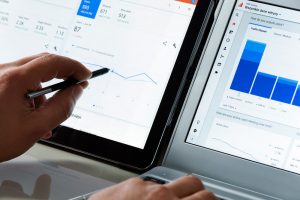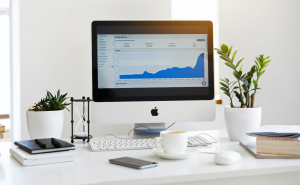
Google Analytics is a fundamental tool to understand how users behave in an ecommerce or website . Therefore, each update of Google Analytics gives us more intelligent data and metrics about users and customers. How they browse the web, future demand predictions, changes in their needs and preferences, etc. If you're looking to improve your marketing decisions , you're in luck! The new update to Google Analytics expands the possibilities for a more complete understanding of how customers interact with your business.
What's new in the new version of Google Analytics
The new Analytics is much smarter than the previous version. Now it is able to offer predictions based on artificial intelligence, provide customer life cycle reports , provide greater audience integration with Google Ads , and more.
Next, we invite you to discover more details about its news.

More integration with Google Ads
What advertisers appreciate most about the new version of Google Analytics is that they will be able to create and maintain audiences both on the web and in the app.
For example, we have a user who usually enters the web / app to look, but never buys. If one day he decides to buy something, he becomes part of the audience of "buyers". You will then be automatically removed from the view-only list and automatically added to the buyers list. It seems somewhat inconsequential, but depending on the audience a user belongs to, they will receive different information and advertisements. This prevents you from receiving advertisements for products you have already purchased and from receiving other types of information.
New features and metrics that strengthen data protection
With the new restrictions and confinement, online stores are going through a “golden” age.
In fact, in marketing, Google Analytics has been used for years to optimize the user experience in ecommerce . However, its use has become even more established since it is a safe tool to understand consumer behaviors and tastes.
For Google it is a priority to make “ every marketing dollar count ”. So with the changes in consumer behavior during the last months of Covid-19, Google provides ecommerce with new functions and metrics to increase the protection of user data .
Customer life cycle reports
Another important point of the new Google Analytics is how the reports are ordered , the improvement has been radical.
According to representatives of Google itself, they have reorganized each of the reports that were in the app + web beta version, added new functions and made it operate as a result of the life cycle of the clients.
In other words; These reports are designed to help marketers drill down into certain factors in the customer journey .
So, now, in the user acquisition report you can see which channels are opening the way to the acquisition of new customers . The engagement and retention reports can then be used to understand customer behavior and whether they are still on the web after converting.
One of the roles of this new version of Google Analytics is to provide a more solid view of the interaction between customers , devices and channels . This is to avoid duplicating users across different devices and to report correctly to target ads.
There will no longer be delays of days. Each video playback and scroll on the web will be recorded in real time, without having to include a code or specify the tracking in Google Tag.
More user data controls
The new Analytics hasn't forgotten about advertisers who care about complying with data regulations like the GDPR. They have incorporated new options to keep them out of the law.
In other words, the new Analytics is designed so that websites cannot collect analytical data from users without their explicit approval. The previous version did not have this, so many customers considered the value of this Google product to be zero.
On the other hand, the new version of Google Analytics, in its beta format, allows the behavior of tags and codes to be adapted according to the user's consent . Likewise, it is able to notify if approval has been provided for Analytics and Ads cookies .
Finally, Google's tags will be dynamically adjusted and will only use cookies for the indicated purposes when the user approves it.
Conclusion
By the novelties that the new Analytics presents we can predict a bright future for you . Even the arrival of those days without third-party cookies is already looming. Google has started working on it, so it will rely on machine learning to support multiple modes of analysis.
Everything indicates that the new version of Google Analytics will become the default alternative when configuring a new property. Although the previous version will not disappear, we advise to run both property modes and run them simultaneously.
What are you waiting for? Enter Google Analytics and discover everything it offers to your business!


